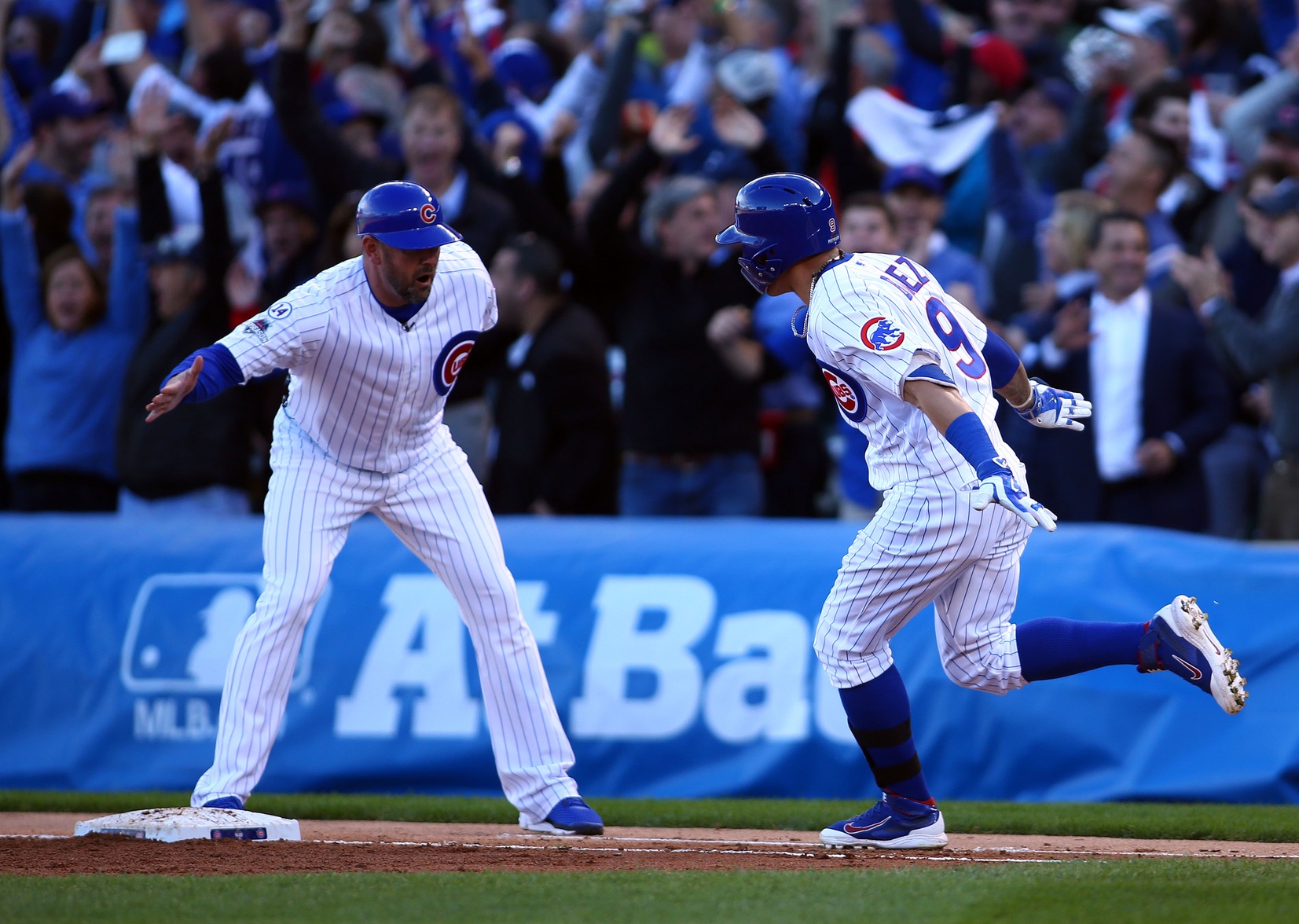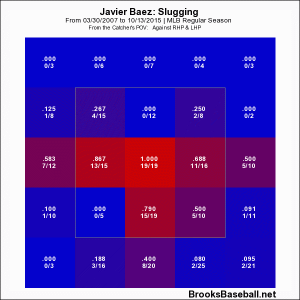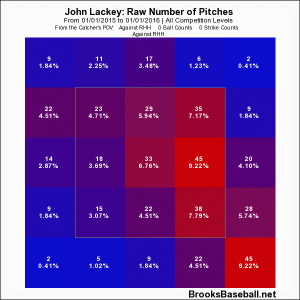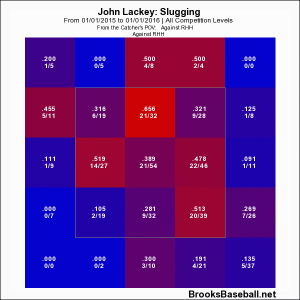Great moments… are born from great opportunity. And that’s what you have here, tonight, boys. That’s what you’ve earned here tonight. One game.
-Kurt Russell (as Herb Brooks), Miracle
It’s hard to know who Kurt Russell/Herb Brooks was addressing in this speech. Some scholars maintain it was the 1980 U.S. Men’s Hockey Team, just moments before arguably the most famous sporting event in American history. Others, myself mostly, maintain he was speaking to Javier Baez, just a few hours before Game Four of the 2015 NLDS.
Baez had certainly been given a great opportunity on Tuesday afternoon, albeit via unfortunate circumstances. Starting in place of Addison Russell at shortstop and batting eighth, Baez had a chance to deliver on a national stage, much the way other Cubs 25 and under crew had in this series. While not a rookie, at many points this season, the prodigious exploits of rookies Kris Bryant, Addison Russell, and Kyle Schwarber often made Baez the forgotten stud. Just a season ago, though, BP ranked Baez as the fourth-best prospect in baseball. Lost in the shuffle at times, Baez is still just 23, and posted a .912 OPS and .203 ISO at Triple-A Iowa this season.
Baez earned his spot in this moment. Would he deliver against John Lackey in the second inning?
Entering the game, Baez had eight plate appearances against Lackey, the most of any pitcher in his career. Baez was 0-for-8 with four strikeouts. On paper, it seemed like advantage Lackey—despite the small sample size—except for one thing: how Lackey attacks Baez:
- Of the 28 pitches Baez had seen from Lackey, 15 were four-seam fastballs
- Of the eight first pitches of the eight at-bats, six were four-seam fastballs, and five were on the outer half of the plate or off the plate completely
- Of the remaining 13 pitches Baez saw, 12 were sliders (including the other two first pitches), and all were on the outside edge
Baez was ineffective against Lackey, but he certainly had a pretty damn good idea of how Lackey would attack him, especially on the first pitch. He would most likely start him on the outer edge, and their previous encounters suggested overwhelmingly that it would be a four-seam fastball.
Jason Hammel, owner of five career hits, had just singled off Lackey to make it a one-run game. Now with two outs and runners on first and second, Baez stepped to the plate. Wrigley Field, according to first person accounts from BP Wrigleyville’s Sahadev Sharma and Rian Watt, was primed to erupt with joy.
How did Baez and Lackey perform this season on the first pitch of the at-bat?
Baez on first pitch this season (and 2014, because he received just 80 plate appearances in 2015)…
.333/.333/.458, 1 HR
In his 309 career plate appearances, Baez has swung at 24 first pitches. Of the 24 swings, he had eight hits, including one home run.
Against right-handed pitchers, in all counts, Baez has hit just .195/.243/.321 with a strikeout rate (37.4 percent) more than six times his walk rate (6.0 percent). Against righties, he has slugged .357 against four-seam fastballs and .500 sinkers, but without a home run on either pitch, and Lackey went to those two pitches a combined 75 percent of first pitches in 2015.
These numbers did not inspire confidence in this matchup. However, as we detailed above, Lackey goes to the middle and outer half of the plate on both first pitches and against righties. In his brief career, Baez has been tremendous on pitches middle-out, particularly in the bottom two-thirds of the strike zone:
Against right-handed pitchers (and their fastballs) and Lackey, Baez had not produced, but he had found success on pitches on the outer half.
Lackey on first pitch this season…
.329/.340/.455, 4 HR
On first pitches this season, right-handed batters slugged .446 with three home runs. This season, on the first pitch, opposing right-handers slugged .609 against his four-seam fastball (44 percent usage rate, about 12 percentage points below his overall season average) and .667 against his slider (21 percent usage rate), but only .273 against his sinker (31 percent usage rate). As you can see below, on first pitches when facing righties, Lackey lived in the middle of the plate out:
And this season, right-handed batters had success against Lackey from the middle of the plate out:
To summarize, right-handed batters see a fastball 75 percent of first pitches, and in the situation, Lackey stays middle-away. File that away. Additionally, right-handed batters can trust Lackey will be around the plate. Since the start of 2014, Lester’s 4.3 percent walk rate versus right-handers ranks 13 of 87 qualified pitchers.
The Pitch
Tony Cruz set up on the outside corner, between the knees and the belt. Lackey came sidearm instead over the top, and hit the outside corner, if slightly up from the target, with a 94-mph fastball. Baez got his front foot down, kept his stance closed, and was able to whip the head of his bat through the strike zone. He launched the pitch into the right-center-field bleachers, where it was lost among the frenzied blur of blue and white. The Cubs led 4-2, and while the Cardinals would tie the game temporarily, Chicago would never again trail in the game (or series, for that matter).
Previously, Lackey had success staying away from Baez with four-seam fastballs, and sliders, especially on the first pitch, but he had gone to that well against him repeatedly. Throw in Lackey’s 2015 track record of going with fastballs away on first pitches to righties, and Baez had a solid idea of what to expect. He would get a pitch middle-out, and it would likely be a fastball.
Baez was presented with a great opportunity, and he delivered a great moment for a team advancing to the NLCS for the first time since Friends was still on the air. The Cubs did not need to believe in miracles in Game Four. Just Javier Baez guessing right on a first-pitch fastball.
Lead photo courtesy of Jerry Lai-USA TODAY Sports



